The best vacuum cleaner for tiled floors is not just a cleaning tool, but a real helper for anyone who wants spotless ceramic tiles, shiny porcelain surfaces, and debris-free grout lines without extra effort.
Whether you are searching for the best vacuum for tile floors, looking for the best vacuum cleaner for tile and grout, or trying to find a reliable tile floor vacuum cleaner that works smoothly on kitchens, hallways, or large tiled rooms, one thing is clear:
tile surfaces need a vacuum designed specifically for hard, smooth flooring. Tiled homes may look easy to maintain, but dust, pet hair, crumbs, and fine debris tend to settle between tiles, making the right cleaning machine more important than many people realize.
Many homeowners assume any vacuum can work on tile, but that is rarely the case. The best vacuum for ceramic tiles or best vacuum for porcelain tile floors needs stronger airflow, a tile-safe brush head, and wheels that glide effortlessly without scratches.
If you have pets, you might also need the best vacuum for tile floors with pets, while small apartment owners may prefer a lightweight or cordless model that fits into tight kitchen corners. For mixed flooring, a best vacuum for tile floors and carpet or a multi-surface vacuum cleaner for tiled areas becomes even more valuable.
Tiled flooring is one of the most popular choices in modern homes—found in living rooms, entryways, bathrooms, and open-kitchen layouts. Although tile looks sleek and clean, particles often hide in tiny grooves, making sweeping less effective.
A dedicated best tile floor vacuum cleaner pulls out fine dust, lifts debris, and provides a deeper clean than traditional methods. Options like tile-friendly vacuum cleaner models, tile-safe vacuum cleaners, cordless vacuums for tile surfaces, or even robot vacuums for tiled homes can help reduce daily cleaning time while keeping your floors spotless.
In this guide, we will explore everything you need to know—what makes a vacuum ideal for tile floors, which features matter the most, and how to compare top products before buying. By the end, you will feel confident choosing the best vacuum cleaner for tiled floors that fits your home, lifestyle, and cleaning routine naturally.

Why Do You Need the Best Vacuum Cleaner for Tiled Floors?
Understanding How Debris Settles on Tile Surfaces
Tile floors look smooth, but they catch fine dust and tiny crumbs that stay visible longer than on carpet. When you use the best vacuum cleaner for tiled floors, you pick up these loose particles faster and more effectively.
Many people notice that debris spreads across ceramic tiles or porcelain tiles instead of sinking in. A good tile floor vacuum cleaner helps gather everything in one pass without leaving trails behind.
Using the best vacuum for tile floors also reduces the extra work that sweeping often creates, because a broom pushes dirt sideways instead of removing it completely.
Why Pet Hair Travels Easily Across Tiled Floors
Pet hair rarely sticks to tile, which sounds good at first, but it means the hair moves around every time you walk through the room. The best vacuum cleaner for tiled floors captures this moving hair before it settles between tiles or along the baseboards.
If you have pets, you already know how fast hair drifts across smooth tile floors. A vacuum designed for tile surfaces or ceramic tile flooring keeps the room cleaner with less effort.
Using a tile safe vacuum cleaner also helps cut down the amount of hair that floats into the air when you sweep.
The Role of Grout Lines and Why They Need Stronger Suction
Grout lines collect more dirt than any other part of the floor. The best vacuum cleaner for tiled floors with strong airflow lifts dust that hides inside those lines.
Even when a tile floor looks clean, grout lines often look darker because they trap fine debris. A good vacuum cleaner for tile and grout helps pull out that settled dust without scrubbing.
This is where a tile specific vacuum cleaner or a vacuum for ceramic tiles becomes helpful, because stronger suction reaches those narrow gaps better than sweeping or mopping alone.
Sweeping Versus Vacuuming on Tile Floors
Sweeping works for quick cleanups, but it does not remove everything. The best vacuum cleaner for tiled floors collects debris instead of spreading it across the surface.
A broom pushes the dirt around and leaves a film of dust behind. A tile floor vacuum cleaner pulls in the fine particles that your eyes cannot always see.
Vacuuming tile floors is also easier for anyone who has allergies because it keeps the air clearer than sweeping, which often stirs up dust.
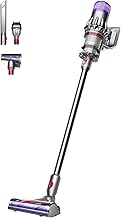
Why Scratch-Free Cleaning Matters for Tile Floors
Many homeowners worry about scratching their tiles, especially glossy or porcelain tiles. The best vacuum cleaner for tiled floors uses soft wheels and a gentle cleaning head to protect the surface.
A tile friendly vacuum cleaner glides smoothly without leaving marks or dragging dust across the floor. This makes your tiles look newer for a longer time.
Choosing a vacuum designed for tile floors also means you avoid problems like rough bristles or heavy wheels that can leave scuff marks on delicate surfaces.
Durability and Daily Use on Tiled Surfaces
Tile floors are often placed in high traffic areas like kitchens and hallways, which means they need regular cleaning. The best vacuum cleaner for tiled floors should handle daily use without losing performance.
A strong tile floor vacuum cleaner is built to pick up the kind of debris that appears all day long, from crumbs to dust to pet hair that seems to never end.
Because tile is a hard surface, a durable vacuum made for tile cleaning works more efficiently than general models that are meant mostly for carpet.
How the Right Vacuum Improves Daily Cleaning
When you use the best vacuum cleaner for tiled floors, cleaning becomes quicker and more consistent. You do not have to sweep first or repeat the same spot over and over.
A vacuum designed for tile surfaces gives better coverage in less time, especially on large porcelain tile floors or stone tile areas. This makes daily chores feel lighter.
Once you switch to a vacuum made for tile floors and grout lines, you notice the difference in how clean the room looks and how little dust remains afterward.
What Makes a Vacuum Cleaner Good for Tiled Floors?
How Suction Power Affects Tile Surface Cleaning
The best vacuum cleaner for tiled floors needs enough suction to lift fine debris that sits on top of smooth ceramic or porcelain surfaces. Tile does not trap dust the way carpet does, so you need steady airflow instead of extreme suction that feels heavy or noisy.
A strong tile floor vacuum cleaner should pull debris in a consistent stream. This helps collect crumbs that scatter easily and pet hair that slides across the room when someone walks by.
The best vacuum for tile floors works better when the suction is stable. It clears dust from open surfaces and from grout lines without forcing you to make several passes.
Choosing a vacuum for ceramic tiles or a vacuum cleaner for tile and grout becomes easier when you understand that even airflow matters more than raw power. It gives you a cleaner floor with less effort every day.

Why Soft or Rubberized Wheels Protect Your Tiles
Smooth tile needs gentle care, so the best vacuum cleaner for tiled floors should have soft or rubberized wheels. Hard plastic wheels can leave marks on porcelain tiles, especially if the vacuum is heavy.
Rubber wheels glide nicely on ceramic tile floors and prevent those tiny scratches that show up over time. This makes a tile friendly vacuum cleaner safer for long-term use.
A good vacuum for tile flooring moves smoothly from one tile to the next. It does not bump or drag along the edges, which helps keep your tiles looking new.
When you choose the best vacuum for tile floors with soft wheels, the vacuum feels easier to push. This makes cleaning faster and more comfortable, especially in large tiled areas.
Understanding Brush Rolls on Tile Floors
Many people wonder if they need a brush roll on tile. The best vacuum cleaner for tiled floors can work with or without a brush roll, depending on the design.
Soft brush rolls and rubber fins help sweep debris forward without scratching ceramic tiles. They grab pet hair more easily and prevent crumbs from sliding out of reach.
Some tile floor vacuum cleaners use a removable brush roll for flexibility. You can turn it off when cleaning delicate porcelain tiles and turn it on when switching to rugs or mats.
A vacuum cleaner for tile surfaces works well with a gentle or brushless head too. It depends on the type of tile and how much debris collects in the room.
Why Good Filtration Improves Tile Cleaning
Tile floors release more loose dust into the air because dirt does not sink into the surface. This makes filtration an important part of choosing the best vacuum cleaner for tiled floors.
A sealed system with a HEPA filter captures fine particles that get kicked up while vacuuming ceramic tiles or stone tiles. This helps keep the air cleaner for anyone with allergies.
The best vacuum for tile floors does more than clean the surface. It reduces the amount of dust that settles again after cleaning, which keeps tiled rooms looking fresher throughout the day.
Good filtration also prevents dust from escaping back into the room when you empty the vacuum, making your cleaning routine smoother and healthier.

Choosing Between Corded and Cordless Vacuums for Tile Floors
Both corded and cordless models can be effective, and the best vacuum cleaner for tiled floors depends on how you prefer to clean. A corded vacuum offers consistent suction and works well for larger tiled spaces.
Cordless vacuums feel lighter and more flexible. They make it easy to clean kitchens, hallways, and open tile areas without dragging a cord around.
The best vacuum for tile floors in small apartments is often cordless because it takes less space, and the battery life easily covers the area. For big tiled rooms, a corded vacuum might feel more reliable.
Either option works when you choose a vacuum designed for ceramic tile floors or porcelain tile surfaces. The key is comfort and how often you vacuum.
The Importance of Weight, Noise, and Easy Handling
Tile floors echo sound more than carpet, so a quieter model makes cleaning feel more comfortable. The best vacuum cleaner for tiled floors usually has a smoother motor tone that feels natural in hard-floor rooms.
Lightweight vacuums are easier to move across porcelain tiles and large ceramic surfaces. This matters when you clean daily or cover long hallways and open spaces.
A tile floor vacuum cleaner with easy handling makes the job feel less tiring. It turns well, moves quietly, and does not shake or rattle across the tiles.
Choosing the best vacuum for tile floors becomes easier when you consider how it feels to use. A comfortable vacuum leads to cleaner floors with less effort and less noise.
Types of Vacuum Cleaners for Tiled Floors
Upright Vacuums for Tile Floors and Their Value
Upright models are often the first option people look at, and many of them work well on tile when designed with the right features. The best vacuum cleaner for tiled floors in upright form offers strong suction and a wide cleaning path, which helps you finish the job faster in large rooms.
These vacuums pull in loose dust from ceramic tiles and porcelain flooring without scattering debris. The design feels steady and is easy to guide across long hallways or open tiled living areas.
A good upright tile floor vacuum cleaner also gives you solid airflow that keeps the grout lines cleaner. This is helpful if you have textured tiles or darker grout that tends to trap more dust.
Many upright vacuums come with attachments that make it easier to reach corners and baseboards. This helps you get a more complete clean on tile surfaces without switching tools all the time.

Stick Vacuums for Tile Floors and Their Everyday Convenience
Stick vacuums are popular because they feel light and simple to handle. The best vacuum cleaner for tiled floors in stick form lets you clean kitchens, hallways, and small apartments with smooth control.
A stick vacuum for tile floors works well when you want something easy to grab for quick cleaning. It picks up crumbs and dust on ceramic tiles without much effort.
These vacuums move nicely on porcelain tiles because they have softer wheels and lighter bodies. This prevents scratches and makes cleaning feel easier on the hands.
A tile friendly stick vacuum cleaner is perfect for daily touch ups. It keeps tiled rooms fresh without taking up much storage space.
Canister Vacuums and Their Smooth Handling on Tiles
Many homeowners prefer canister vacuums for tiled floors because they move smoothly and offer high suction. The best vacuum cleaner for tiled floors in canister form glides across ceramic tile floors with gentle wheels that protect the surface.
The hose and wand give you more flexibility. You can reach grout lines, corners, and edges without pushing a heavy body across the tiles.
A canister vacuum for tile and grout offers steady airflow that pulls out fine debris easily. This is helpful in kitchens and dining areas where crumbs settle fast.
Shoppers often choose canisters for tile because they give strong performance without the weight. This makes them comfortable for long cleaning sessions.
Robot Vacuums That Work Well on Tiled Homes
Robot vacuums are a good choice for daily dust control, especially on larger tiled areas. The best vacuum cleaner for tiled floors in robot style keeps your ceramic tiles clean throughout the day without much effort from you.
These vacuums move across porcelain tile floors in smooth paths, picking up fine dust that settles quickly. They help reduce the amount of dirt you see between cleanings.
A robot vacuum for tile surfaces uses sensors to avoid bumping into furniture and to map the room. This improves coverage and makes the cleaning pattern more efficient.
If you have pets, a robot vacuum can help you manage drifting pet hair that travels easily on tiles. It gives your rooms a consistent clean without lifting a full-sized vacuum.

Wet-Dry Vacuums for Tiles and Dealing With Spills
Wet-dry vacuums are helpful when your tiled floors need more than dry cleaning. The best vacuum cleaner for tiled floors in wet-dry form handles sticky residue and spills that happen in kitchens or dining areas.
These vacuums pull in both dry debris and wet messes without creating streaks. This is helpful for ceramic tile floors that get lots of foot traffic.
Some wet-dry models also combine vacuuming with light mopping. This keeps porcelain tile floors looking fresh with less scrubbing.
A wet-dry vacuum for tile surfaces is perfect for families who cook often or for homes with pets. It makes cleaning faster and gives you a deeper finish.
Best Vacuum Cleaner for Tiled Floors: Top Picks (Full Reviews)
Best Overall Vacuum Cleaner for Tiled Floors
Choosing the best vacuum cleaner for tiled floors often comes down to finding a machine that balances strong suction with smooth handling.
The Shark Vertex DuoClean fits this need better than most because it handles tile dust, loose debris, and light grime without scattering anything around. It also works well on ceramic floors, porcelain tiles, and smooth stone areas.
The suction stays steady even when moving from tiles to rugs, which helps people who need one tool for their whole home.
The soft roller head picks up fine particles that usually stick between tile edges, giving you a more complete clean.
The vacuum also glides easily, so your arms don’t feel tired after a full-house cleaning session.
One thing you’ll notice is how quiet it feels on hard flooring. This makes it a great fit for apartments or homes where noise travels.
It also includes a sealed filtration setup, which traps dust and helps keep the air clearer after each pass.
This vacuum is best for families, pet owners, or anyone who wants a trusted tile floor vacuum without worrying about constant maintenance.
It stands out because it leaves tile flooring polished-looking even without extra effort.
Best Budget Vacuum Cleaner for Tiled Floors
If you want the best vacuum cleaner for tiled floors without spending a lot, the Eureka WhirlWind is one of the most reliable budget options. It offers strong suction on tile surfaces, especially for crumbs and daily dust, while staying lightweight enough to carry around easily.
The simple canister design gives you good control on ceramic tiles and kitchen floors.
Even though it’s affordable, it still performs better than many low-cost tile cleaning vacuums. The washable filters help reduce long-term costs, and the hose gives you enough reach to clean under tables and low furniture.
Its hard floor mode keeps the airflow steady so you get consistent cleanup on tiles.
The vacuum doesn’t come with many extras, but what it offers works well for tiled areas.
There’s enough suction to pick up pet hair and small messes that fall between the grout lines.
It’s best for students, renters, small-apartment owners, or anyone needing a simple vacuum for tiles that doesn’t break the bank.
What makes it good for tile specifically is its even suction and smooth wheels, which prevent scratches and streaks.
Best Cordless Vacuum for Tiled Floors
When you want the freedom of cordless cleaning, the Dyson V12 Detect Slim stands out as one of the best vacuum cleaners for tiled floors. The soft fluffy head captures fine tile dust, loose crumbs, and even the powdery debris that often settles on ceramic surfaces.
It’s lightweight, so cleaning the kitchen or hallway feels much easier.
One helpful feature is the green laser, which highlights tiny dust you might miss on tile flooring. This makes your cleaning more complete without needing extra passes.
The battery life is long enough for daily tile maintenance in small and medium homes.
The filtration is strong, trapping small particles and keeping the air clean as you move.
Because the vacuum is cordless, you can reach corners, edges, and tight tile spaces without dealing with a cable dragging behind you.
This vacuum is best for people who want quick, quiet, and efficient tile cleaning.
Its ability to glide over tiles smoothly makes it especially good for tile kitchens, bathrooms, and dining areas.
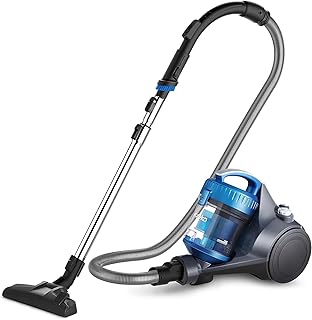
Best Robot Vacuum for Tile and Grout
For homeowners who want a hands-off approach, the Roborock S8 Pro Ultra is one of the smartest robot models and easily ranks among the best vacuum cleaner for tiled floors options available.
Its dual roller system pulls dust and grit from tiles without leaving residue behind.
This robot is great at picking up debris from grout lines, which is something many robot vacuums struggle with.
The built-in mapping learns your home quickly and makes sure the vacuum doesn’t miss tile edges or corners.
The self-cleaning dock also makes maintenance simple.
It empties itself, washes its mop pads, and prepares for the next cleaning session without any extra work from you.
It’s ideal for busy families, professionals, or anyone who wants tile floors to stay clean without manual vacuuming.
The reason it performs so well on tiles is because of its suction consistency and brush design, which reduces scatter and digs up hidden debris between lines.
Best Vacuum for Tile Floors with Pets
If your home has pets, the Bissell CrossWave Pet Pro is a strong choice and one of the best vacuum cleaner for tiled floors models designed with pet owners in mind.
It vacuums and washes at the same time, helping you remove loose fur, muddy paw marks, and food debris in a single pass.
This machine uses a pet-focused roller that lifts hair without tangling.
The suction pulls debris off ceramic and stone tile surfaces with ease, and the wet cleaning option helps remove sticky spots that regular tile vacuums leave behind.
The separate clean and dirty water tanks also keep everything hygienic, which matters if pets shed often or bring dirt into the house.
Its tile-safe design means you can use it daily without worrying about damage.
This best branded vacuum is great for dog and cat owners, families with active pets, or people who want one tool for both dry and wet messes.
It stands out on tile because it handles hair, dust, and small pet messes better than most standard dry vacuums.
How to Choose the Best Vacuum Cleaner for Tiled Floors (Buying Guide)
What Type of Tile Do You Have
Understanding the type of tile in your home helps you pick the best vacuum cleaner for tiled floors because different surfaces respond better to certain suction levels and cleaning heads. Ceramic tiles are common and tend to work well with tile-ready vacuums that offer steady airflow and soft rollers.
Porcelain tiles are slightly harder and usually have a smoother finish. A tile cleaning vacuum with controlled suction glides easily over porcelain and helps remove powdery dust without streaks.
Stone tiles often have natural grooves where dirt settles, so a vacuum for tiles with stronger lift is helpful here.
Terracotta tiles are more delicate and need a tile-safe vacuum cleaner that doesn’t scratch the surface. The softer the flooring, the more important gentle suction becomes.
Glossy tiles reflect light and show dirt faster, so a ceramic floor vacuum with a soft head leaves them looking clean after every pass.
Textured tile floors have deeper patterns that trap debris. A hard tile cleaning vacuum with a roller designed for uneven surfaces can reach those spaces effectively.
Knowing your tile type guides you toward the right machine and keeps your floors in better condition over time.
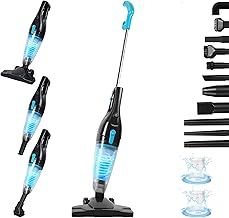
Suction and Airflow What’s Ideal for Tile Floors
When choosing the best vacuum cleaner for tiled floors, the right suction level makes a big difference. Tile surfaces don’t need the same deep-pile power as carpets, so you want steady airflow rather than overwhelming force. A tile cleaning vacuum with balanced suction helps lift dust without pushing debris around.
Airflow is often measured in CFM, which simply refers to how much air the vacuum moves. More airflow usually means better pickup on tile edges and in small grooves.
Air Watts measure how efficiently that airflow turns into actual cleaning power, but the numbers don’t need to be complicated.
For tile flooring, a vacuum for tiles with moderate Air Watts often performs perfectly because tiles don’t trap dirt deeply.
The key is consistent suction across the head so you don’t leave behind fine dust.
If your home has ceramic or porcelain floors, airflow matters even more because those surfaces gather powdery debris. A tile-ready vacuum with stable suction gives you a cleaner finish.
Choosing the right airflow helps maintain shine and reduces the need for extra cleaning steps.
Brush Roll Type for Tile Floors
The brush roll plays a big role in finding the best vacuum cleaner for tiled floors because tile surfaces benefit from gentle contact. A soft bristle roll is good for ceramic tiles and glossy surfaces since it catches fine dust without scratching. It feels smooth when moving across hard flooring.
Rubber brush rolls work well for homes with pets because they collect hair without tangling. They also glide over porcelain tiles and textured patterns more easily.
If your flooring has deeper grooves, rubber blades help push dirt out so the suction can lift it.
A brushless suction head is another good option for tiles, especially if you prefer quieter cleaning. It relies on strong airflow rather than spinning brushes.
This design is perfect for delicate tile surfaces like terracotta where you want minimal friction.
Your choice of brush roll affects how clean your floor looks after a single pass. A tile-safe vacuum cleaner with the right head keeps your tile in good shape while improving the overall cleaning experience.
Thinking about your tile type helps you select a head that fits your space naturally.
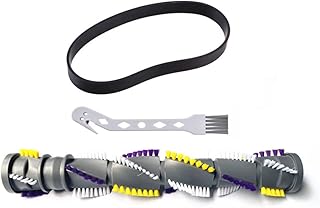
Attachments That Help Cleaning Tile More Effectively
Good attachments make the best vacuum cleaner for tiled floors even more helpful because tiles have edges and lines where dirt gathers. A crevice tool is great for grout lines since it reaches narrow spaces that standard heads can’t clean well.
This keeps tiles looking brighter and prevents dust buildup.
A soft dusting brush is useful around baseboards and furniture legs. It removes debris without marking the surface, which is important for ceramic and glossy tile floors.
It’s gentle enough to move over corners where dust settles.
For homes with pets, a electric motorized head adds extra power to pull up hair from textured tiles and stone surfaces. It helps remove heavier debris that sticks to the floor.
These attachments make a tile cleaning vacuum more versatile in different rooms.
Each tool plays a small part in giving tiles a more complete clean. When combined with steady suction, they help your vacuum for tiles perform at its best.
Choosing a model with the right tools saves time and improves results on every type of hard flooring.
Wheel Material and Head Design
The wheel design matters more than most people realize when selecting the best vacuum cleaner for tiled floors because tile surfaces can show scratches easily. Wheels made from soft or rubberized material help protect ceramic and glossy tiles from marks.
They also glide better across polished floors.
Smooth movement is important on large tile areas, especially kitchens and hallways. A tile-ready vacuum with flexible wheels keeps the head stable while picking up dirt.
This reduces scattering and makes the cleaning pass more even.
The head design should sit close to the ground so the suction can lift fine tile dust instead of blowing it away.
A well-designed head adapts to different tile patterns, including textured or stone surfaces.
When the wheels and head work together, cleaning feels easier because the vacuum follows your movement naturally.
This helps you maintain your tile floors while keeping the process simple and comfortable.
Weight and Maneuverability
Weight plays a big part in choosing the best vacuum cleaner for tiled floors, especially if you have large rooms or long hallways. A lightweight tile floor vacuum feels easier to move and reduces arm strain when you clean often.
Tiled homes usually have wide open spaces, so a heavy vacuum can feel tiring after a short time. A lighter vacuum for tiles lets you move smoothly from the kitchen to the living room without slowing down.
It also helps you reach tight corners more comfortably.
Maneuverability matters as much as weight because tiles often have furniture placed across them. A vacuum with a swivel head handles these spots better and reduces the number of passes you need.
This saves time and keeps your movement more natural.
Lightweight vacuums also work well on glossy tile floors because they glide without sticking.
Choosing a model that is both light and easy to steer keeps your tile cleaning routine simple and enjoyable.
Filtration and Dust Containment
Filtration helps you choose the best vacuum cleaner for tiled floors because tile surfaces gather fine powder that becomes airborne during cleaning. A sealed-system filtration setup traps those particles inside the vacuum instead of releasing them back into the room.
Tile dust is usually very light and spreads quickly. A tile-safe vacuum cleaner with a good filter keeps your home fresher after each pass.
This is especially helpful for homes with pets, children, or anyone sensitive to dust.
HEPA filtration is effective for capturing small particles and keeping the airflow clean.
When paired with strong suction, it helps remove dirt trapped in tile edges and grout lines.
Dust containment also prevents clogs, which keeps your vacuum running smoothly for longer.
Choosing a vacuum with reliable filtration improves both air quality and your cleaning results on every tile surface.
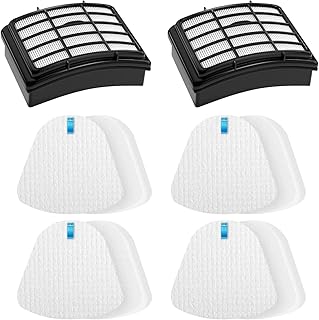
How to Vacuum Tiled Floors Properly (Extra Helpful Section)
Should You Vacuum or Sweep Tile Floors First
When you’re using the best vacuum cleaner for tiled floors, you often don’t need to sweep first because a tile floor vacuum already removes fine dust better than a broom. Sweeping usually pushes dirt into the corners, while a tile cleaning vacuum pulls everything in one smooth pass.
Some people still like to sweep large debris before using their vacuum for tiles, but it’s not required unless something bulky is on the floor.
For everyday dust, pet hair, and crumbs, your tile-ready vacuum handles it easily without leaving behind a trail.
Vacuuming first also helps reduce airborne dust because the suction locks particles inside the machine instead of spreading them.
This makes a big difference if you have ceramic or glossy flooring that shows every bit of debris.
Sweeping can be useful for outdoor tile entrances, but for indoor cleaning, a tile-safe vacuum cleaner gives a deeper and more even result.
So in most cases, vacuuming should be your first step to keep the tiles cleaner and brighter.
How to Clean Grout Lines With a Vacuum Cleaner
Grout lines can be tricky, but the best vacuum cleaner for tiled floors does a surprisingly good job when paired with the right attachment. A crevice tool is your best friend here because it focuses suction into narrow spaces and removes the dirt that hides between tiles.
Start by running slow, steady passes along each line so the tile cleaning vacuum has time to lift debris.
Speeding through this step won’t give the grout enough contact time with the airflow.
If your flooring has wider grout, a rubber-bristle tool can help loosen compacted dust before suction pulls it up.
This works well on stone or textured tiles where debris settles deeper.
Vacuuming grout regularly keeps your tiles looking newer because dirt tends to darken the lines over time.
A vacuum for tiles with strong airflow makes this process easier and more consistent.
Working in sections helps you stay thorough without missing any corners.
A clean grout line instantly makes the entire tile surface look brighter.
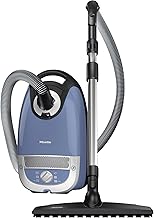
Conclusion
Choosing the best vacuum cleaner for tiled floors becomes much easier once you know what your tile needs and how different features affect cleaning. When you match the right suction, brush roll, and tools to your flooring, the results feel smoother and more consistent.
A good tile floor vacuum doesn’t just clean faster. It keeps grout lines clearer, reduces airborne dust, and helps your tile stay bright for years.
Finding the machine that fits your home makes the whole cleaning routine simpler and more enjoyable.
With the right vacuum for tiles, every pass feels effortless, and your floors stay cleaner with less work.
That’s what truly makes the best vacuum cleaner for tiled floors worth choosing.
FAQs
1. Is vacuuming safe for tile floors?
Yes, vacuuming is safe as long as you use a tile-safe vacuum cleaner with soft wheels and a gentle cleaning head.
These features prevent scratches while still removing fine dust that sweeping often leaves behind.
2. Can I use the same vacuum for tile and carpet?
You can, but make sure the vacuum has adjustable settings.
Tile floors need steady airflow, while carpets need deeper suction, so switching modes makes cleaning easier.
3. How often should I vacuum tiled floors if I have pets?
Homes with pets usually need daily or every-other-day vacuuming because hair moves quickly across tile surfaces.
A tile-ready vacuum with strong airflow helps keep the floor cleaner between deeper cleanings.
